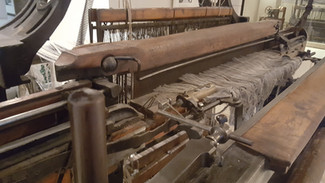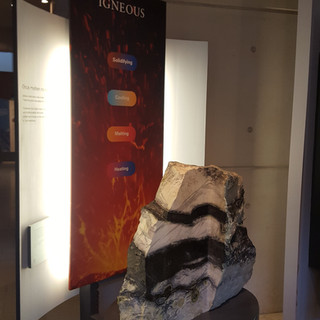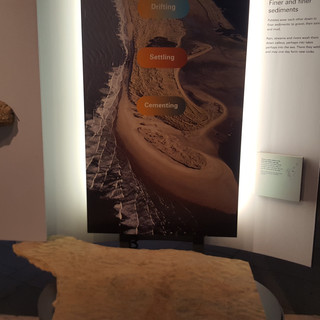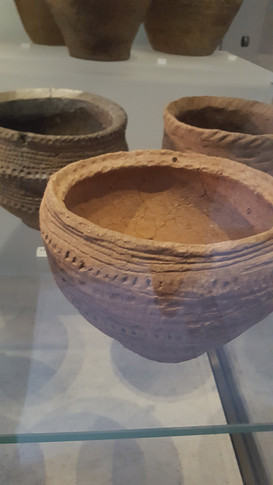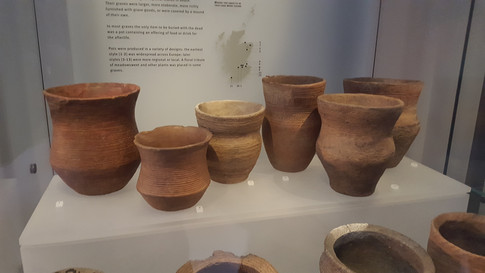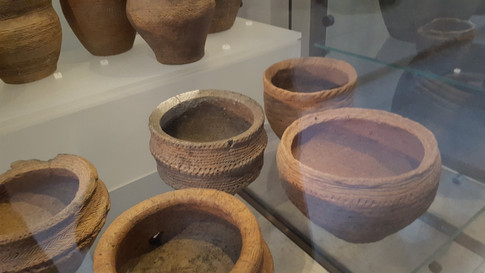Great display of industrial machinery, geology and most importantly ( and why I came) burial urns. It called to mind the sounds and smells of working mills and factories, I suppose in a way much of that has gone. Only in very specific places can it be found still, like the steel works in Wymondham where I have sourced some steel to build a kiln. Oil, swarf, grime all seems to have an odour of potential production which is somehow alive, not like the green fluorescent tint and carpet tile smell of the office environment. Again, not to romanticise about the industrial age. You are more likely to lose a finger in a loom than a keyboard.
Good to see these stratified rock forms and the the relationship between the minerals and materials of a location relating to its industrial heritage. No coal, no iron, no industry.
A fascinating display of burial and ceremonial vessels.
A number of things to note.
Building methods and decoration- coiled and incised pattern work if any detail at all. varying quality of workmanship could indicate different craftsmen or family made?
How sherds are displayed in a new acrylic (?) vessel
Some vessels displayed 'upside down'- this prompted a whole discussion with Alice the archeologist as to why this might be. I wondered if the vessels were placed that way so that the remains were closer to the ground but she told me that there didn't seem to be any correlation with this thinking and how finds were discovered in the ground although it was not unreasonable to suppose the possibility.
It did make me consider the shapes I was considering using and how they might be displayed.
I was also interested in how the Celtic cross was displayed as a fragment to be seen from both sides...

On walking around the gallery, I came across a Victor Passmore drawing on a gesso board. There seemed for me a strange correlation between work that I have done in the past and works done more recently in ceramics. Strangely, the painting studio I did my BA in was called the Victor Passmore building, having been opened by him on the Yorkshire sculpture park site. There were similarities in the motifs and shapes used in the drawn work, which I had been producing for some time. there are , for me at least allusions to a vertical landscape. I feel this may help me open up pathways for drawings in the clay boards I had prepared.
Something that appeals to me still is that sense of commanding attention through the use of space. Susan Phillips exhibition at the Scottish National Gallery of Modern Art really struck a chord with me. She and the work demands...this is how this space should feel for the work to exist in and be part of. It's impossible not to feel reverence, albeit unexplained and unreasoned whilst viewing the work. I liked the way still images are shown along with moving machines, the record players creating the sound heard throughout. they almost become life forms in a space we are entering, as though their world would continue once we have left earshot.







